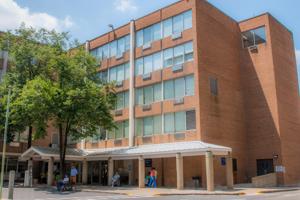The Vascular Medicine Center at Boston Medical Center offers comprehensive care from one of the most advanced multidisciplinary teams of specialists in the region. With minimally invasive techniques and treatments that reduce risk and shorten recovery times, our goal is to save limbs and lives—and improve the quality of life for all our patients.
Location and Contact
Vascular Medicine Center
Monday–Friday 8:30 a.m. to 4:30 p.m.
Related Departments and Clinics
Vascular and Endovascular Surgery
Cardiovascular Center
Arrhythmia Center
Cardiac Surgery
Hypertrophic Cardiomyopathy Clinic
Preventive Cardiology
Interventional Radiology
Neurosurgery

Education and Training
Boston Medical Center offers a vascular and endovascular surgery fellowship that provides trainees with a diverse and challenging clinical and surgical experience, supported by innovative didactic and research opportunities. This two-year fellowship includes both advanced endovascular techniques and complex open vascular surgery to ensure our trainees develop skills for whatever path they choose.


